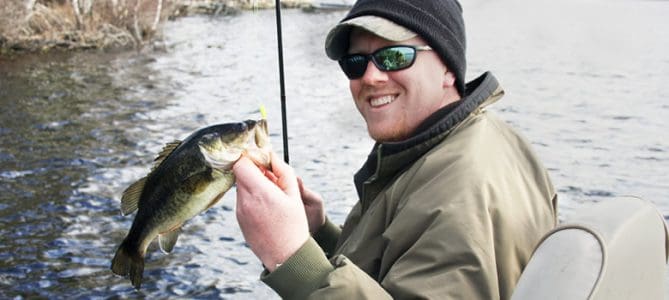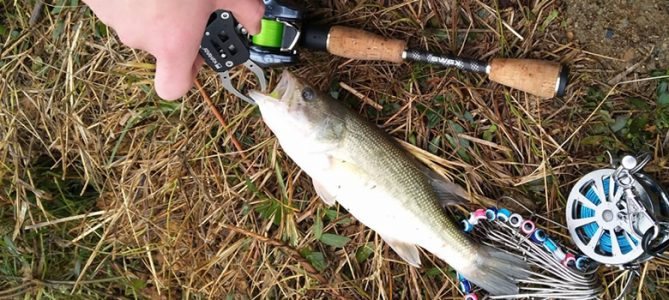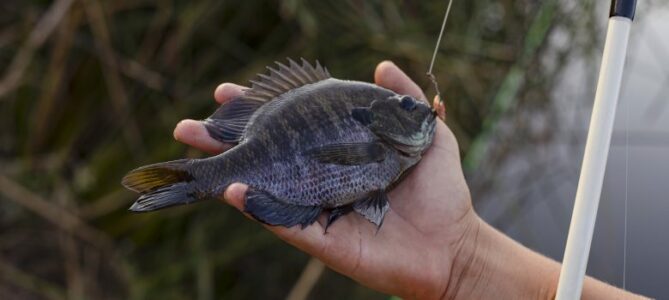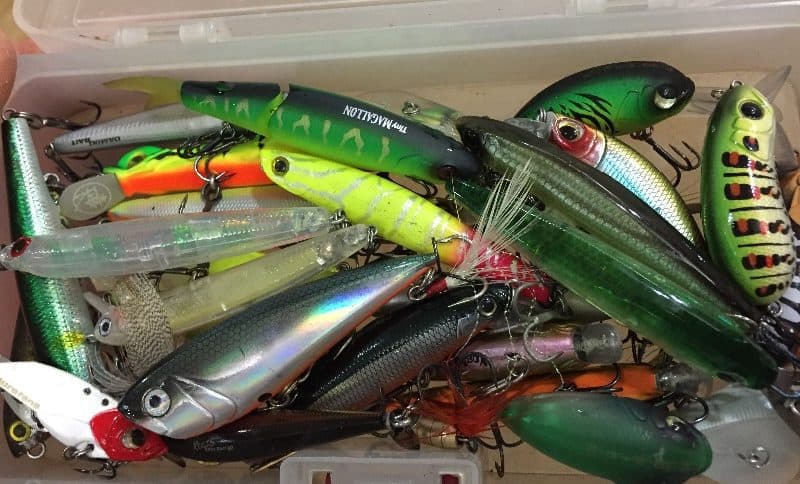If you buy via a link on this page, we may receive a commission, at no extra cost to you.Learn more
The Ned rig has been around for some time now. But its popularity is increasing fast, especially now that we are nearing bass season.
The beauty of the Ned rig is that it is simple to build and use. It also works on several different layouts, making it the perfect approach to catch largemouth, smallmouth, and spotted bass.
Also known as the Midwest finesse rig, the Ned rig is a superb technique to add to your skill set. That’s why we are going to dedicate today’s piece to how, when, and where to use a Ned rig. Let’s get started.
What Is a Ned Rig?
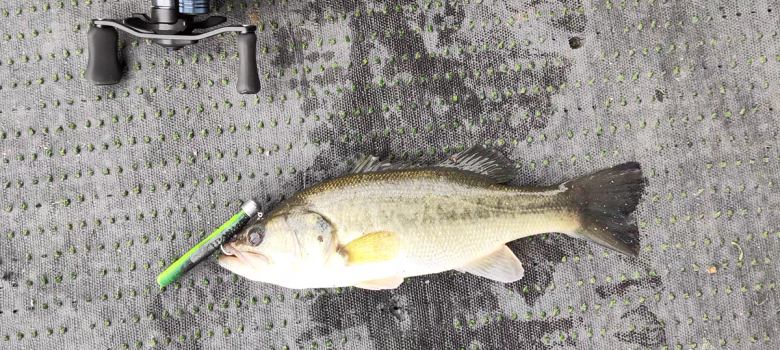
The Ned rig is a finesse technique that requires little equipment. Just grab a small plastic worm and push it through a mushroom jig. The resulting rig will easily float near the bottom and move naturally.
The name derives from its inventor: Ned Kehde, a popular outdoor writer and angler. Because it got popular in the Midwest first, it is also known as the Midwest finesse rig.
Ned Rig: What Do You Need
Gathering the materials is the first step before learning to set and use a Ned rig. So, let’s get them:
Mushroom Jig Heads:
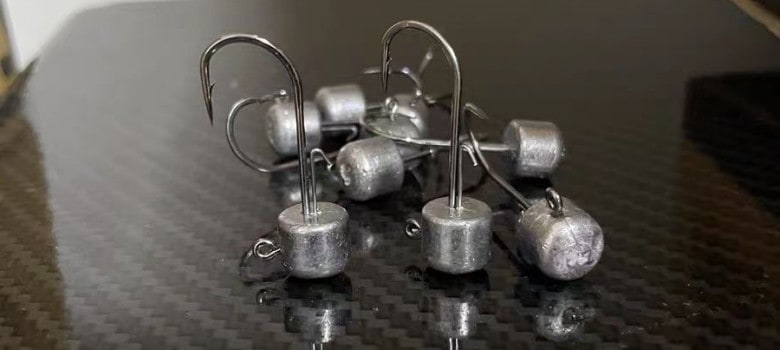
Mushroom jigs look exactly like any other type. But you will notice that the rig head looks like a mushroom, hence the name. These can come with or without a weed guard.
The weedless mushroom jigs are ideal to fish on waters with heavy cover. This way, the worm won’t get stuck as you work it through the water.
The Mushroom jig usually has a straight hook. But EWG hooks are also common. These are especially good for catching big bass.
The Ned rig jig weight varies between 1/8 and 3/16 ounces. I use 1/8 and 1/16 ounces jigs more often. My favorites are the MadBit Ned Rig jigs. I bought the 48-piece box a couple of years ago. It offers a wide selection of sizes, colors, and hook types.
Plastic Soft Lure:
Most plastic worms will do the trick. But in my experience, thick ones work better. This box is an ideal choice to get you started. It offers a wide selection of colors. Plus, the worms are naturally buoyant and reflective. A combination that will make the lure more appealing.
I’ve noticed that some anglers use plastic crawfish instead. I haven’t tried it. But it should work, provided you set it up correctly.
Do I need Sinkers for a Ned Jig?
You don’t need sinkers since Ned jigs already have a built-in weight. Adding extra weight to the line will only achieve two things: Kill the action and make the line more likely to break. These two will render any rig, including the Ned rig, useless.
What Line for Ned Rig?
There are several options for fishing lines. I recommend anything between 6 to 12-pound test lines, which is the range used for bass fishing.
In terms of materials, I usually go for a braided line with a fluorocarbon leader. This approach helps me to get longer casts and better hooksets.
However, it is common to see anglers using only monofilament too. Either approach works as long as you feel comfortable with it.
If you are keen on trying braid, I recommend using the Sufix 382. The line is available in several different colors and tests strengths.
What Rod and Reel for Ned Rig?
Both spinning and baitcasting rods are suitable for finesse techniques, including the Ned rig. The important thing is to choose the right power and action combination. I suggest going for a light or medium-light rod with a fast-action tip.
A fast-action rod will bend at the slightest pressure while having enough backbone to take big bass out of the water.
Make sure to choose a reel that is compatible with the rod. Most rods have a label that shows the suggested line sizes. The same happens with the reel. Just make sure to choose a combination that is suitable for the test strength we talked about before.
How to Rig it the Ned’s Way
There is no hidden secret. That’s the beauty of the Ned rig. The process is as follows:
- Pierce the worm through one end. Make sure the hook gets through.
- Push the worm to the jig’s head
- Pierce the worm again. This time in the middle. There is no need to push the worm down.
There is an alternative method that consists of piercing the worm’s head and squeezing the hook through without it protruding at the other end. Once the worm is at the jig’s head, let it pass through the worm again.
Most mushroom jig hooks feature a bait keeper. It is a tiny bit of metal that secures the worm in place. Make sure to pass the worm through it too!
Regardless of the approach, part of the worm will remain outside the jig. This is mandatory, as that half is responsible for most of the action.
How to Work a Ned Jig
There are different methods of working the jig. Here you have the most common:
- Straight Swim: This is the easiest method. You simply need to retrieve the Ned rig slowly once it reaches the bottom. Make sure you do it at a constant pace. I find this method productive when bass are actively feeding.
- Drag and Deadstick: I use this technique when fish are lethargic. The constant drag and pause will attract nearby predators regardless of the temperature. Just make sure to let the bait still for a couple of seconds before dragging again.
- Swim and Glide: This method might look like the Drag and deadstick for the untrained eye. But there is a huge difference. There are no pauses.
The technique consists of retrieving the line while lifting the rod a little. Then, let the Ned rig sink again and return the tip to the initial position. Rinse and repeat.
Although there are other methods, they are variations of the ones presented here. Just add a couple of twitches here and there and you will have a different technique. Make sure to share with us if you make a groundbreaking discovery.
When to Use Ned Rig
The Ned Rig is not only easy to use, but it is also a year-round approach for catching fish. You can use it when fish are lethargic, or you can use it when they are active.
I know. You might be asking yourself. How can the Ned rig produce fish throughout the year? Well. It all depends on how you work the bait. For example, sudden jerks followed by long pauses are ideal when fish are lethargic. In contrast, steady retrieval and constant movement is the way to go when there is no shortage of bites.
Where To Use a Ned Rig?
Again, the Ned rig works in most, if not all, bodies of water. I use a lighter 1/16 or 1/8 Ned jig for shallow waters. The weight is enough to bring the finesse worm down steady yet slow enough for fish to see.
In contrast, 3/16 or even 1/4 Ned rig jigs are ideal for fishing in deeper water. This helps me to get the rig down the water column quicker. I also use a heavier jig when fishing through weeds. The only difference, however, is that this time I use a jig with a weed guard.
What Fish Can You Catch With a Ned Rig?
Anglers primarily use the Ned rig to catch bass. However, it is also productive for catching walleye, crappie, and other panfish.
What Does the Ned Rig Imitate?
The point of the Ned rig is to mimic crayfish, worms, and other bottom prey.
How Long Should the Leader Be on a Ned Rig?
The reason to use a leader is to separate the bait from the easily visible braid. Between 4 to 6 is more than enough to get the job done.
When the Ned Rig is Most Effective?
Although the Ned rig is productive throughout the year, I cannot deny that it is particularly productive in pressurized waters with lethargic fish. No wonder why anglers love it.
Ned Rig: Simple Yet Effective
Now you understand what’s behind the uproar for the Ned rig. It is a simple technique that requires little material. But the real beauty is that you don’t need to be an expert to catch fish with it. And, the best thing is that it produces bass regardless of the water temperature, depth, and cover!
On top of that, most fishing tackle shops sell tailor-made soft plastic lures and jig heads. So, there is really no need to put too much thought into what to get. Just make sure to choose the right hardware.
To recap. I recommend using a light to medium-light fishing rod with fast action. 6 to 12-pound test lines will do the trick. Pair the two with a compatible reel, and you are good to go!

